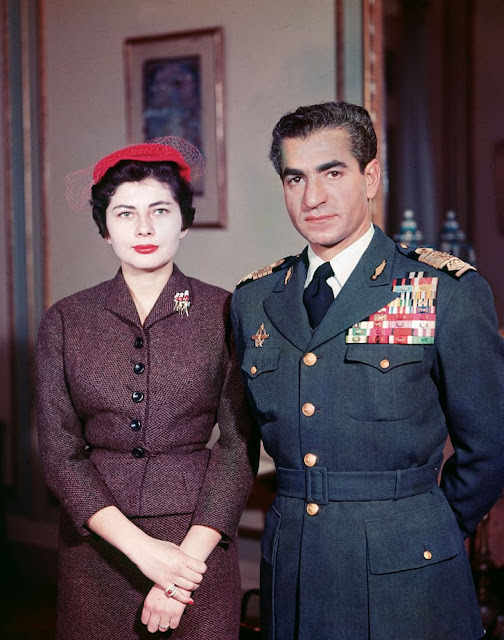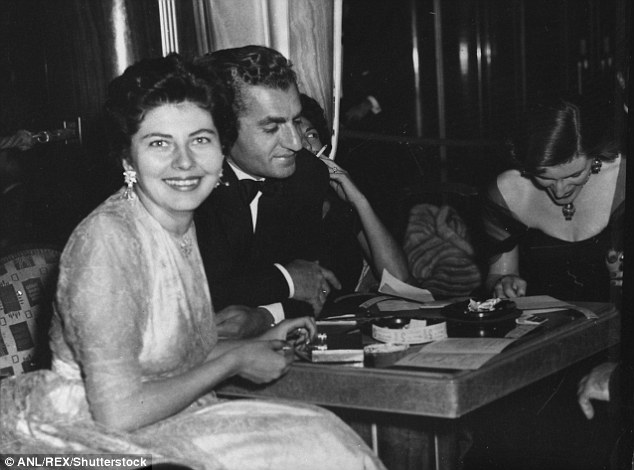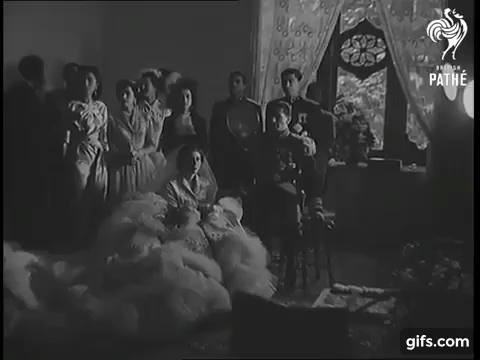The Beguiling Soraya remains one of the saddest and most beautiful figures of royal history, a victim of times and mentalities like so many other women who did not have her outstanding public status.
This is tragic story
of Soraya Former Queen of Iran:- who received a jewel every day from Shah- but
was divorced when she couldn't give birth a successor to the throne successor
to the throne. The beguiling Soraya was the Shah's only true love.
His first of marriage
of Reza Shah Pahlavi, to Princess Fawzia of Egypt, ended in divorce. Because he
only had one daughter with his first wife, and his younger brother, Ali Reza,
was expected to succeed him, the Shah had to remarry to ensure stability of the
crown in the country
Love struck the new
and by now divorced Shah. Beautiful, emerald eyed beguiling Soraya
Esfandiary-Bakhtiari half German half Irani and the only daughter of Khalil
Esfandiary, Iranian Ambassador to West Germany, and his wife, Eva Karl.
Soraya had been
brought up more as a German under the tutelage of her governess Frau Mantel,
followed by a stint at a Swiss finishing school in Montreaux.
While she was
studying in London at the age of 16 in 1948, she was befriended by the Shah’s
younger sister Princess Shams. A relative of Soraya’s showed her picture to the
Shah who became smitten with her.
After his very first
meeting with her, the Shah asked her father for her hand in marriage. Soon they
were engaged and the Shah presented Soraya with a whopping 22.37 carat diamond
ring.
The
Shah married Soraya in 1951 at the Marble Palace that his father had had built.
The wedding had been delayed because the bride had been ill from typhoid.
She wore a Christian
Dior Couture gown from his New Look collection. It had 37 yards of silver lamé
studded all over with tens of thousands of pearls, 6,000 diamonds, and 20,000
marabou feathers.
It weighed a staggering
44 pounds (20 kilograms). Because she was still weak, the bride had difficulty
walking in the heavy dress. Seeing her totter, Shah ordered a lady-in-waiting to
cut the petticoats and train to lighten her load.
Additionally, the
strapless dress had a fitted long sleeve waist length jacket and veil for the
Nikah ceremony. Because the wedding was in February, a full-length white mink
cape kept the bride warm in the non-heated palace and she secretly wore woolen
socks on her feet, which were hidden by the baggy skirt.
In the evening, for
the 2000 people reception, the jacket and veil came off and an emerald and
diamond parure from the crown jewels that matched her green eyes added even
more sparkle. 5 tones of orchids, tulips and carnations had been flown in from
Netherlands to do up the palace and the entertainment included a Roman
equestrian circus.
The couple received
such lavish wedding gifts as a mink coat and a desk set glittering with black
diamonds sent by Soviet head Joseph Stalin, a Steuben glass Bowl of Legends
sent by U.S. President and Mrs. Truman, and silver Georgian candlesticks from
King George VI and Queen Elizabeth.
Though the new Queen headed Iran’s charity association. Just
two years later, in 1953, the royal couple fled Tehran for Iraq and Italy after
a failed revolution attempt in Iran, but they returned soon after.
Seven years into the
marriage, the royal couple was faced with a dilemma. They had come to a
crossroads due to Soraya’s inability to have children, a fact confirmed by
American doctors.
In October 1954, when
she was 22 years old, a doctor told Soraya that it might take years for her to
become pregnant, leaving her and the Shah without an heir to the throne.
Two
days later, the Shah became angry at his birthday party when he learned that
his brother, Ali Reza, next in line for the throne would not be at dinner
because he was running late leaving a hunting party near the Caspian Sea. The
following day, the family learned that Prince Ali Reza had died when the plane
bringing him back to Tehran crashed.
Though he was very much in love with Soraya, the Shah desperately needed a male heir. Under the Persian constitution, if Shah had no heir, then the royal line would end. He tried to convince her to let him take a second wife, but Soraya was adamant.
In an interview to
the New York Times Soraya said that she did not want “the sanctity of marriage”
violated and decided that “she could not accept the idea of sharing her
husband’s love with another woman.” She added it was with a heavy heart and
because he had no choice that the Shah reluctantly divorced her.
At that time of their separation, Soraya issued a statement to the Iranian people from her parents’ home in Germany.
Stating, “Since His Imperial Majesty Mohammad Reza Shah
Pahlavi has deemed it necessary that a successor to the throne must be of
direct descent in the male line from generation to generation to generation, I
will with my deepest regret in the interest of the future of the State and of
the welfare of the people in accordance with the desire of His Majesty the
Emperor sacrifice my own happiness, and I will declare my consent to a
separation from His Imperial Majesty.”
On 21st March 1958,
Iranian New Year’s Day, the Shah announced his divorce to the Iranian people in
a TV and radio broadcasted speech that was broadcast, adding he would not
remarry in haste. His voice shook with emotion, clearly he had been crying.
Life of Beguiling queen Soraya after Divorce
Divorce meant not only leaving her country (she was exiled to Switzerland) but also the man she loved deeply. At 26 years old, she was forced to start a new life in a new country all alone.
The Shah still loved
his ex-wife; he granted Soraya the title Princess of Iran and made sure she
received a monthly $7000 payment from the State of Iran. They continued to meet
in Europe after their divorce, even though Soraya had started a film career.
Soraya became a style icon and socialite
famous for her collection of jewellery and her royal past. She had a brief
career as an actress (known only as Soraya) and starred in the 1965 Italian
movie “The Three Faces” and became the companion of its director, Franco
Indovina.
She had always
harbored a fantasy to be a film star. Despite taking acting lessons, she only
managed to appear in two films. Through her new connections, she met the
married Italian director Franco Indovina and they started a love affair.
For a short moment, it looked as if life and love were smiling
again to Soraya. But Indovina died in a plane crash, and Soraya succumbed to
depression. She ended her artistic career and took up residence in France.
Occasionally, she attended social events in the French capital but became an
increasingly rare presence as time went on.
Heart-broken Soraya
relocated to Paris and bought an apartment on the posh and happening Avenue
Montaigne, which sold at her death for $3 million. Soraya travelled, was fond
of frequenting the Plaza Athene Hotel near her home.
She also made friends
with her celebrity hair stylist Alexandre Zouari who introduced her to the
young, glitzy crowd. But still lonely and depressed, she was called the
“Princess with the sad eyes” by those who met her. In 1991, she wrote her
second autobiography, Le Palais Des Solitudes (The Palace of Loneliness).
Princess Soraya
bequeathed her £50 million fortune, including her engagement ring, a 1958 Rolls
Royce, countless furs and costly paintings that were all auctioned off to her
younger brother and only sibling, Prince Bijan Esfandiary, but he too died only
a week later at his home in Cologne.
In the 1980s, during the Islamic Revolution when Iran
reduced her revenue, she sold a number of her jewels, including a Harry Winston
diamond necklace.
The necklace sold at an auction at Christie's in Geneva in
November 1988.died in Paris on October 25, 2001, 21 years after the Shah of Iran.
Her brother, Bijan, was the legal inheritor of her estate. But when he died,
the entire estate was passed on to the German state.
She died in 2001 at the age of 69 in Paris. Her body was found by her cleaner. Her story inspired and impressed many people. French songwriter Francoise Mallet-Jorris to write “Je veux pleurer comme Soraya” (I Want to Cry Like Soraya), a rose was baptised with her name and an Italian/German television movie about the princess’s life, Soraya (the Sad Princess), was broadcast in 2003, starring Anna Valle as Soraya and Erol Sander as the Shah.
Since
they had no living relatives and he had made no will, the entire fortune went
to the German state government (and not Iran) where it was used to pay for
street lighting, rubbish collection and other public amenities in North Rhine
Westphalia where the Prince lived at the time of his death.
Perhaps
the Irani people were right when they claimed their Queen was more German than
Irani.
The End
Disclaimer–Blogger has prepared this short
write up with help of materials and images available on net. Images on this
blog are posted to make the text interesting. The materials and images are the
copy right of original writers. The copyright of these materials are with the
respective owners. Blogger is thankful to original writers.


















No comments:
Post a Comment